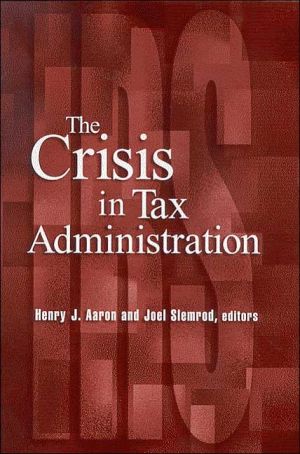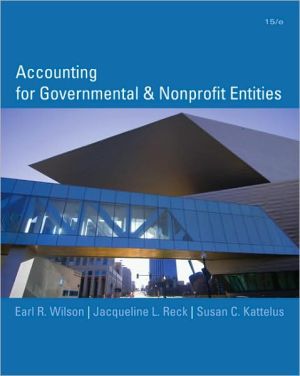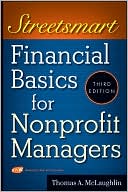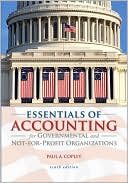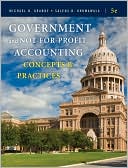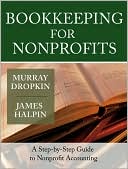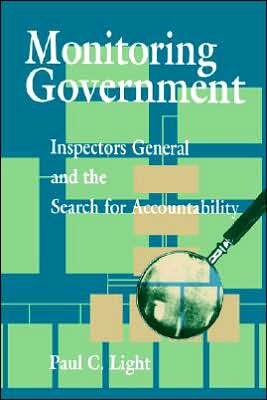The Crisis in Tax Administration
People pay taxes for two \ reasons. On the positive side, most \ people recognize, even if grudgingly, that payment of tax is a duty of \ citizenship. On the negative side, \ they know that the law requires payment, that evasion is a crime, and that \ willful failure to pay taxes is punishable by fines or imprisonment. The practical questions for tax \ administration are how to strengthen each of these motives to comply with the \ law. How much should be spent on \...
Search in google:
Containing ten papers presented at a conference co-sponsored by the Brookings Institution (where Aaron is a senior fellow) and the Office of Tax Policy Research, University of Michigan Business School (where Slemrod teaches), this data-rich volume audits the economic and legal issues facing tax administrators at the Internal Revenue Service and globally in improving tax policy and enforcement. An especially interesting chapter examines whether tax filing software can reduce the system's complexity. Annotation ©2004 Book News, Inc., Portland, OR
The Crisis in Tax Administration\ \ Brookings Institution Press\ Copyright © 2004 Brookings Institution Press\ All right reserved. \ ISBN: 0-8157-0122-5 \ \ \ Chapter One\ HENRY J. AARON JOEL SLEMROD\ Introduction\ Tell someone you would like to discuss tax administration, and you are likely to see their eyes cross with anticipated boredom. Ask that same person what it was like to fill out last year's tax return or to respond to the last communication with the Internal Revenue Service, and you are likely to see fists clench and sense blood pressure rising. Tax administration is at once the dullest of topics and a government function that arouses powerful emotions.\ The paradoxes do not end here. Complaining that taxes are too high and that the IRS is too intrusive is almost an American tradition. Yet most people pay their taxes. They do so for two reasons, despite the cost and complexity of complying with the tax law. On the positive side, many recognize, even if grudgingly, that paying taxes is a duty of citizenship rather than the outcome of a cost-benefit calculation. On the negative side, taxpayers know that the law requires payment, that evasion is a crime, and that willful failure to pay taxes is punishable by fines or imprisonment, even if the chances of being caught are remote. The practical questions for tax administration are how much to spend on enforcement to maintain the second of these motives for payment and how to organize administration to get the best results for each dollar spent. But the admittedly grudging willingness of many taxpayers to obey the law is critical to the operation of the income tax system. If most people stopped dutifully complying with the law, no feasible system of tax enforcement, short of police-state tactics, would suffice to maintain current levels of compliance.\ Lately Congress has restricted spending on tax administration, forcing the Internal Revenue Service to curtail its enforcement activities. Between 1992 and 2001, when the number of individual returns increased from 114.7 million to 129.4 million and tax returns became increasingly complex because of new legal provisions, the proliferation of sophisticated new financial instruments, and the rapid increase of multinational business operations, the full-time-equivalent IRS work force fell from 115,205 to 95,511, and the number of field compliance personnel dropped from 29,730 to 21,421. As a result, enforcement coverage steadily declined. For example, in-person examination of individuals fell from 5.8 per thousand returns in 1992 to 1.5 per thousand in 2001; correspondence examinations fell from 4.0 to 1.2 per thousand returns. After lengthy congressional hearings, during which numerous witnesses alleged various forms of administrative abuse by the Internal Revenue Service (few of which were subsequently confirmed), Congress forced extensive reorganization on the nation's tax collection agency.\ Tax legislation, globalization, financial innovation, and budgetary parsimony have combined to create something approximating a crisis in tax administration. Outgoing IRS Commissioner Charles O. Rossotti used exactly that word in his end-of-term report to the IRS Oversight Board, asserting that the "health of the federal tax administration system is on a serious long-term downtrend." If the likelihood that evasion will be detected and punished falls too low, those induced by fear to comply will no longer do so. And, as evasion spreads, people who comply out of a sense of civic duty will come to feel like dupes and be tempted to flout the law. To examine this threat, the Brookings Institution in collaboration with the Office of Tax Policy Research at the University of Michigan commissioned ten original studies on tax administration. The papers were presented at a two-day conference sponsored by the Internal Revenue Service, in collaboration with the American Tax Policy Institute and with the support of the American Bar Association Section of Taxation. Each paper was reviewed by two discussants. Edited versions of the papers, gathered in this volume, examine various theories of tax administration, actual administrative practices (including recent modifications initiated in response to legislation), proposed modifications in that practice, and design of tax laws to facilitate compliance and enforcement. The authors and discussants include lawyers, economists, accountants, and officials from governments and international organizations.\ The studies show clearly that tax administration has emerged from academic obscurity. Once a drab subject that held little interest for most serious scholars, tax administration has become a front-burner issue. The simple fact is that good theoretical concepts can easily founder on rocky administrative problems. The Senate hearings that led to reorganization of the Internal Revenue Service further fueled interest. In addition various proposals for fundamental tax reform raise profound issues for tax administration. In the case of tax policy, "good in theory, but bad in practice" means bad in theory, after all.\ Tax shelters for corporations and wealthy individuals have recently become front-page news. Whether use of abusive tax shelters is increasing and, if so, what to do about it is indeed one of the most pressing issues in current tax administration policy. In practice, shelters are created by accountants and lawyers and are marketed aggressively. Current enforcement practice revolves around the "economic substance" doctrine, which allows the IRS to disregard transactions that lack nontax motivation or effect. But, as Joseph Bankman points out in chapter 2, there is no clear statement on how much economic substance is enough. A major goal of tax shelter authors is to invest the transaction with enough genuine economic purpose to pass review. Shelters are hard to detect on audit; even with improved reporting requirements, many shelters will go undetected. The government wins most, but not all, shelter cases it pursues, and there are no meaningful penalties for shelter use. Consequently the decision whether to use a tax shelter is a gamble that many find worth taking, even if their behavior may cross the (admittedly, often blurry) line between legal avoidance and tax evasion. Shelters directly reduce revenue, but the more serious problem is that awareness that shelters work undermines voluntary compliance. Some people justify shelters as a do-it-yourself way of converting the income tax to what many deem superior-a consumption tax. This argument is bogus, according to Bankman, because tax shelters do not lead to an accurate measure of a consumption tax base. Bankman explores various potential approaches to defining business transactions as prohibited tax shelters. While each has flaws, he argues that the war against shelters must continue, because the failure to wage it would threaten the capacity to collect taxes not only on capital income, but also-because of the capacity to transform labor income into capital income-on labor income as well.\ The menu of challenges to tax administrators from international transactions is "prodigious," to quote David R. Tillinghast. Some of the problems result directly from the complexity of transactions involving many companies in various nations operating under different laws and accounting practices and with many currencies. Income is not defined identically in all nations. The largest single problem is the incapacity of the U.S. government to require information returns on various types of foreign-generated income or even to identify people who must file. Some problems arise from criminal transactions-Enron owned 186 entities chartered in the Cayman Islands. Tillinghast argues that a major objective in an increasingly globalized world should be to improve the voluntary exchange of data among governments. The IRS has recently moved to shut down a large tax avoidance ploy advertised by credit card companies-the use of debit cards issued to banks operating out of tax shelter countries that do not share information with the U.S. government. A continuing problem involves international transactions within commonly owned companies-the so-called transfer pricing problem. Such companies can set prices to allocate income to jurisdictions with relatively low tax rates. Tillinghast has high praise for advance-pricing agreements, in which the IRS and private companies agree in advance on the prices at which various transactions will subsequently be valued. Tillinghast cautions that little simplification would likely result if the United States moved from taxing worldwide income to a territorial principle under which only income generated within the United States is subject to U.S. tax.\ Small businesses receive favored treatment under the tax code, and some argue that such treatment may be justified, at least in part, as an offset to the regressive effect of other government regulations that particularly burden small businesses. But Joel Slemrod argues in chapter 4 that this argument ignores the relatively high rate of evasion by small businesses, a problem that justifies intensified auditing and other enforcement measures. Most small businesses report that they lose money. In part this result reflects genuine unprofitability. But it also reflects willful evasion, as careful audits show that small businesses have low rates of voluntary compliance. This is consistent with evidence that shows that the small-business sector tends to expand when tax rates increase, because this increases the value of the greater tax avoidance and evasion opportunities in that sector. For the partnership and some corporation sectors, so-called pass-through entities, non-compliance benefits a highly affluent slice of the taxpayer population. Slemrod argues that application of optimal tax principles warrants intensified enforcement focus on pass-through entities owned by high-income individuals. Indeed the IRS recently announced a shift in focus toward that sector.\ One of the most important innovations in tax administration in recent years is the advent of software to assist individuals and professionals in computing their tax liabilities. Austan Goolsbee in chapter 5 examines whether such tax software has obviated the desirability of tax simplification. His unequivocal answer is no. Those who do not use tax software are precisely those for whom the losses from complexity are the greatest. Nor do those who use tax software do so in order to reduce tax complexity. Rather, use of tax software is a by-product of other characteristics that dispose the user to be computer-literate. According to Goolsbee, a much more promising road to simplification would be to convert the least complex tax form of all-the 1040EZ-to automatic, return-free electronic filing.\ Over the past two decades, the earned income tax credit (EITC) has come to be the largest federal program of cash assistance to low earners. Unfortunately noncompliance with the rules of the EITC is widespread among those who claim this benefit. At the same time, many who are eligible for the benefit do not claim it. In chapter 6 Janet Holtzblatt and Janet McCubbin examine what to do about these and other problems confronting low-income filers. Many difficulties arise from complex and unstable marital and other living arrangements. Others arise from inconsistent definitions of such important terms as dependent child in federal programs. Certain "solutions" to the problem of administering the EITC-such as moving responsibility for refunding monies to an agency other than the IRS-would do little more than shift the problem's locus. Establishing a uniform definition of a dependent child would be of some help. A major challenge is to design rules that would improve compliance without raising obstacles to application that would reduce the proportion of eligible filers who receive the credit.\ Marsha Blumenthal and Charles Christian report in chapter 7 that more than 70 million filers rely on tax preparers-2 million of whom file the one-page Form 1040EZ-to save time and effort and reduce uncertainty. Filers pay handsomely for this service, more than $10 billion, according to estimates by the authors. Unsurprisingly practitioners are used disproportionately by the poorly educated, the elderly, the self-employed, and those with complex returns. When Minnesota taxpayers were informed that they would be subject to an increased audit rate, the use of preparers increased slightly. Studies indicate that the use of preparers is associated with lower voluntary reporting of some types of income but an increased likelihood that filers will pay estimated taxes in the course of the year. The former result suggests that preparers may contribute to evasion. Although tax preparers are subject to IRS regulations and may be fined if they contribute to inaccurate tax reporting, it is unclear how vigorously these regulations are enforced. These considerations are of particular importance in the case of so-called tax shelters, in the design of which accountants and lawyers often play an active and initiating role. Filers who employ preparers are more likely than are unaided filers to use electronic filing, a practice the IRS is encouraging. However, the spread of electronic filing is lagging behind IRS goals.\ Frank Cowell, in chapter 8, examines various economic theories of tax compliance and administration. The earliest models treat taxpayers as gamblers (TAG models) who weigh the potential monetary gain from successful evasion against the potential monetary loss if the evasion is detected and punished. The conclusions from TAG models are that people will evade whenever it pays to do so. Because it is a gamble, they will evade less if they are averse to the risk of being audited and punished. They will evade less if the audit rate or punishment increases. Surprisingly the models do not necessarily predict that evasion rises when the tax rate goes up. More detailed evidence about the nature and determinants of tax compliance in practice come from the now-defunct Taxpayer Compliance Measurement Program (TCMP), a system of extremely detailed audits-known informally as "the audits from hell." The IRS carried out these studies until 1988 to determine how best to allocate its limited enforcement resources. The TCMP revealed behavior that was not inconsistent with the TAG model but provided more detailed information as well. For example, compliance rates vary depending on the source of income, marital status, and age. Some recent research, including laboratory experiments, has cast doubt on the TAG model, suggesting that norms and framing influence compliance and shedding light on the contexts under which duty rather than calculation governs compliance behavior. Cowell suggests that improved theories should encompass taxpayer motivation and the way business conditions influence business compliance. They should also allow for the influence of norms and social interactions, factors that are excluded from TAG models, which treat each individual in isolation.\ Continues... \ \ \ \ Excerpted from The Crisis in Tax Administration Copyright © 2004 by Brookings Institution Press . Excerpted by permission.\ All rights reserved. No part of this excerpt may be reproduced or reprinted without permission in writing from the publisher.\ Excerpts are provided by Dial-A-Book Inc. solely for the personal use of visitors to this web site. \ \
1Introduction12The tax shelter battle9Comments283Issues of international tax enforcement38Comments574Small business and the tax system69Comments1015The turbo tax revolution : can technology solve tax complexity?124Comments1386Issues affecting low-income filers148Comments1887Tax preparers201Comments2188Carrots and sticks in enforcement230Comments2589Effects of tax simplification options : a quantitative analysis276Comments29910Ultimate objectives for the IRS : balancing revenue and service311Comments33811Experience and innovations in other countries347Comments380
